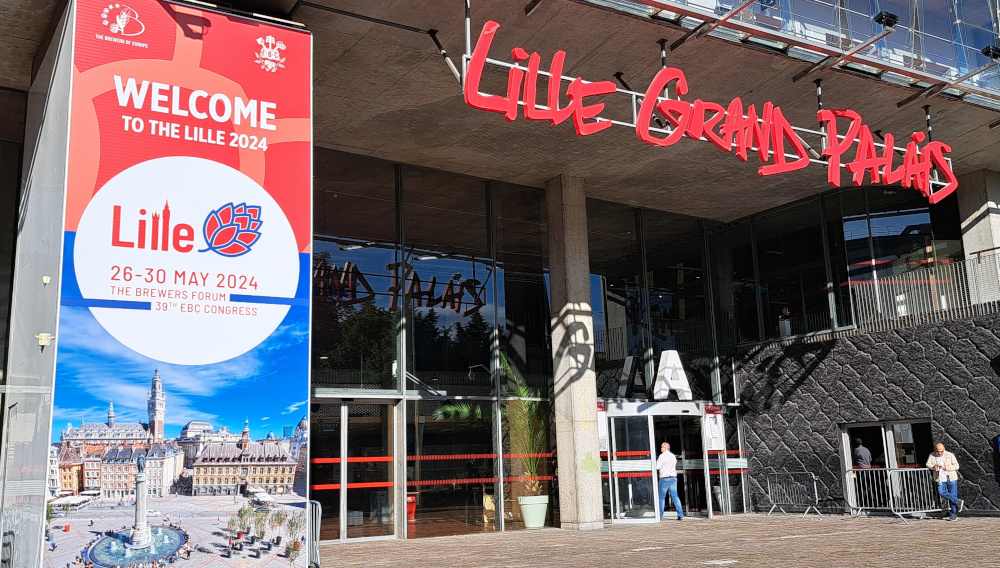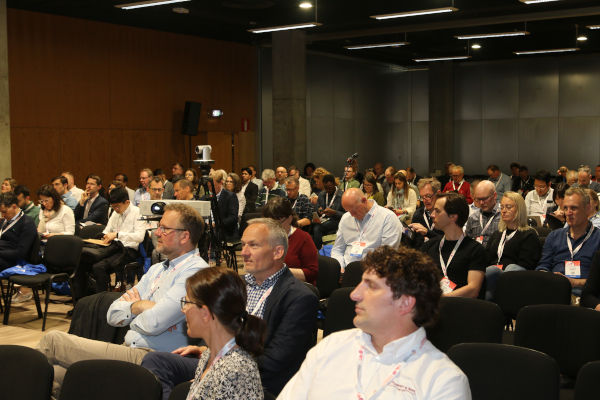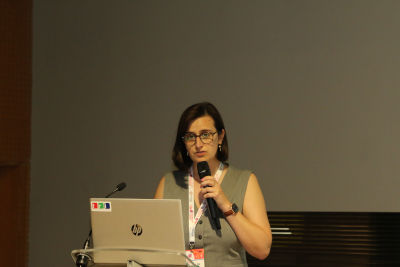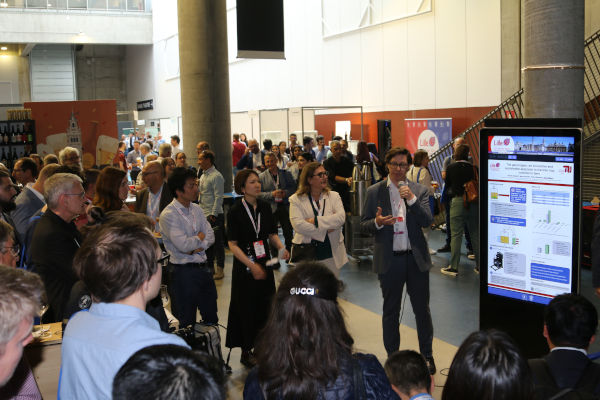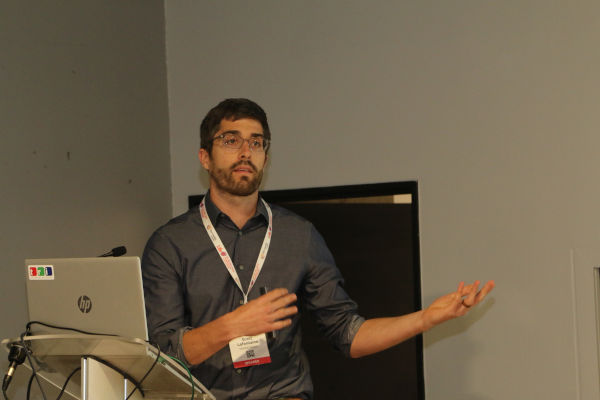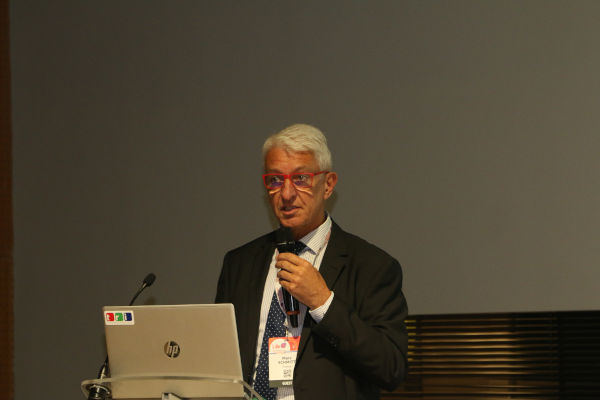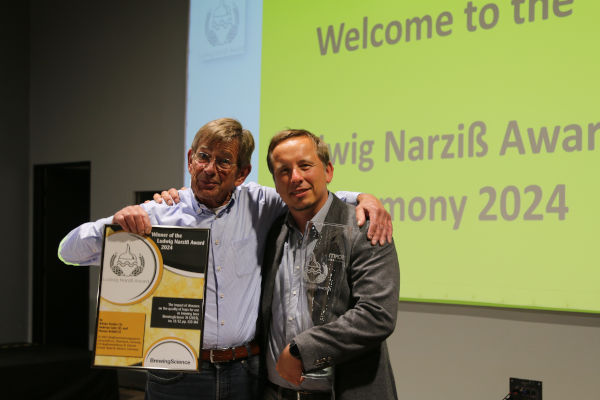EBC 2024: Excellent knowledge exchange platform
Lille | From May 26 to 30, 2024, over 700 delegates made their way to Lille in the north of France to discuss the latest developments not only in the European brewing industry but primarily in brewing science worldwide at the 39th EBC Congress and Brewers Forum 2024. We will report separately on the latter in the next issue. In this article, we will take a look at the talks given at the EBC (European Brewery Convention) Congress that in around 50 presentations and just under 80 posters focused on the key issues of raw materials, sustainability and climate change, new products and the optimization of technology and sensory science.
The congress kicked off on the Monday with a block of talks on malt and brewing adjunct quality. Raimo Koljonen from Viking Malt in Finland began with his contribution on the use of (malted) beans to make beer. Besides enhancing crop rotation in farming and increasing beverage product diversity, consumer studies have produced a number of surprising results on the above, such as a better mouthfeel, a more stable head of foam and a more intensive hop aroma without detriment to the actual beer taste. Bernardo Pontes Guimaraes from the University of Arkansas in the USA has devoted his research activities to the largely disregarded subject of the malt quality of rice cultivars. He found that malted rice makes an excellent ingredient in the making of beer thanks to its good malting qualities. Further advantages include that fact that it is gluten-free, has a better climate resilience and needs a much smaller cultivation area.
The session on environmental sustainability in breweries was slightly more traditional, with Dr. Giovanni De Francesco, CERB, from the University of Perugia in Italy investigating further possible uses of spent hops from the production of dry-hopped beers. Owing to the low extraction efficiency during dry hopping, his studies have revealed that spent hops still contain 70% alpha acid and over 80% hop oil. The isomerisation rate of the alpha acids from spent hops was comparable. De Francesco recommended using spent hops as a bitter substance and flavouring and as a sustainable brewing method.
In the session on wort production and wort quality, Dr. Charlotte De Schepper from the KU Leuven in Belgium tackled the problem of a climate-induced increase in starch gelatinisation temperatures (SGT). To enable brewers to react accordingly in the brewhouse, De Schepper has developed a dynamic method with which to determine the SGT, as the usual static method does not account for the constant change in temperature and mash composition. This results in the extent of the increase in SGT being underestimated.
In the session devoted to fermented products other than conventional beers, the speakers took a look at the bigger picture. In his findings, Mateusz Jackowski from the Wrocław University of Science and Technology in Poland showed how using grape pomace in the brewing process can produce sweeter, more fruity beers. These new products should also prove to be a more sustainable alternative. Maciej Ditrych from Łódź University of Technology in Poland also aims to boost product variety and subsequently illustrated how kombucha benefits from the addition of hops. His trials with various tea extraction methods and different hop quantities (0.5 and 2 g/l of Cascade), including dry hopping, showed that, in addition to changes in the sensory properties, the beverages with hops primarily had a lower radical formation potential, this being substantiated by an increase in the total polyphenol and alpha acid content.
Of increasing significance: NABLAB
Exciting results were presented in the session on no- and low-alcohol beers (NABLAB). Here, Elia Myncke from Ghent University in Belgium established how aroma and taste can be diversified by the use of maltose-negative yeasts. He combined various commercial maltose-negative yeasts with alternative ingredients, using up to 40% adjuncts (such as einkorn, rye, buckwheat and khorasan). These yeasts invariably need a much lower concentration of free amino acids, meaning that more amino acids remain in the beer. The unmalted cereals also demonstrated a higher protein content, which in turn had a positive effect on the foam stability. He also made reference to several potential negative consequences, however, such as a lower ageing stability. With oats, the beer colour and fullness were greatly increased. Khorasan did not show this effect, however. Maeda Satoshi from Asahi Breweries in Japan introduced a new yeast that can produce beers containing 0.0% alcohol. Even in upscaled trials of up to 15 hectolitres with various aeration levels, Kluyveromyces lactis KL139 formed no ethanol as it has lost the ability to absorb the RAG1 transporter glucose under anaerobic conditions. Satoshi was also able to create eight more RAG-negative strains through mutagenesis, with which 0.0% beers can be produced without new equipment having to be procured.
Another approach to the production of beers with no or little alcohol has been adopted by Dr. Sven Schönenberg from IFF in Denmark. Unfermentable sugars are formed by the use of transglucosidase during mashing. Two molecules of maltose thus form α-1.6-linked panose and glucose and, in further reactions, isomaltose and high molecular-weight sugars. He empathised that this approach requires no further adaptations to processes. The resulting beers demonstrated a greater fullness, for instance. This enables alternative beers with a lower alcohol content to be made or these to also be combined with dealcoholisation options.
Even if consumers are becoming more and more health-conscious: first and foremost, the beer they drink must be to their taste. Dr. Scott Lafontaine from the University of Arkansas in the USA addressed the question of how combing analytical results for an alcohol-free beer with the results from tasting studies can be better exploited to meet consumer taste expectations. Studies have shown, namely, that consumer and brewery panels obviously have different ideas here. In production, the technology used – and above all fermentation – impact the ‘beer-like’ quality of a product. “To avoid disappointment, it’s also important to communicate what the consumer can expect from the respective beer in an appropriate way,” stated Lafontaine.
Hop and barley plant breeding
The next day started with a series of talks on the cultivation of barley and hops. Dr. Marc Schmitt from the Qualtech Group in France reported how, in our day and age of climate change and the Green Deal, the ambitious goal of just 8% total protein in barley can be reached by means of targeted cultivation without compromising on malt quality. Through fractionation and characterisation of various protein fractions, in future the most promising cultivars can be selected at an early stage. In a follow-up project, the researchers will then attempt to predict malt parameters using the barley proteins.
Florian Schüll, winner of this year’s Ludwig Narziß Award for Brewing Science, presented his work on the correlation between hop disease and beer quality. In brewing trials with 100% brown or infected hop cones, no analytical or sensory differences could be found to reference beers brewed with perfect cones. Based on these results, a moderate use of brown hops can thus be recommended. In view of the increasing difficulties posed by the use of pesticides on hops, this could be a valuable decision-making tool for brewery procurement personnel.
New findings in yeast research
The topic of yeast was of course also discussed. Prof. Thomas Henle from the University of Dresden in Germany spoke of the metabolisation of Maillard reaction products by yeast. He showed which key role dicarbonyls play in this reaction and how beer yeasts have adapted to this stress. To date, it was not clear how yeasts metabolise these substances. Beer yeasts have adapted to dicarbonyl stress and reduce these substances, while others (such as Paradoxus yeasts) do not have this ability.
Prof. Jessika De Clippeleer from Ghent University in Belgium picked up on Elia Myncke’s experimental approach with various maltose-negative yeasts and alternative ingredients and spoke of the ageing behaviour of such beers. These yeasts absorb fewer amino acids, meaning that a greater amount of the same remains in the beer and thus can have a negative impact on the product’s ageing stability. Such yeasts show a pronounced reduction behaviour, whereby concentrations of aldehyde ageing indicators in NABLAB beers are generally heavily reduced. The smallest changes can thus have a negative effect. The increase in all aldehydes with the exception of furfural was far lower than in conventional beers, however.
A totally new approach to sustainability has been adopted by Irene Pascual Camacho from the Heineken Brewery in Spain. She presented a number of biological ways of cutting energy requirements or, more specifically, trials performed to identify savings potential during fermentation, as different yeast strains require different fermentation times and amounts of cooling energy. In the four yeast strains studied, in addition to the expected differences in taste there were also considerable discrepancies in energy consumption of up to 15% for the top-fermenting strains and 12% for the bottom-fermenting cultivars in direct comparison. “Even if energy savings are tempting, the importance of sensory properties mustn’t be sacrificed here,” she stressed.
Stability and quality
Dr. Gabriela Montandon from Fermentis in France provided an in-depth insight into bottle fermentation. She described the diverse behaviour of four different yeasts in a standardised test setup. In all cases she observed the breakdown of diacetyl, aldehydes and phenols. Ultimately, flavours can either be retained or diversified – and of course off-flavours avoided – by specific selection of the yeast strain and storage temperature.
Dr. Nils Rettberg from the VLB Berlin in Germany reported on the chemical complexity of hoppy beer styles and highlighted the importance of 4-Mercapto-4-methyl-2-pentanone (4MMP) for fresh, fruity impressions in beers such as these. The half-life of this chemical was just 14–30 days in the test beers – much less than for related substances. The routes of degradation are still largely unknown, however, with iron and polyphenols (catechin) displaying a negative impact on the stability, whereas antioxidant glutathione can protect 4MMP. He was not able to ascertain any influence of oxygen, however.
Dr. Florian Lehnhardt from the Weihenstephan Research Center in Germany gave a summary of the ageing behaviour of beer in 20 German breweries. The relevant parameters of the selected breweries differed with regard to their brewhouse materials, process management and raw materials used, among other factors. By splitting them into various groups (stainless steel or no stainless steel, infusion versus decoction, type of boiling system, etc.), particularly relevant influences on the ageing stability could be identified.
Use of AI
The EBC Congress programme also turned its attention to the topic of artificial intelligence or AI. Michiel Schreurs from the KU Leuven in Belgium explored the question of how sensory properties can be predicted by AI (machine learning). He first outlined the weaknesses of linear assessment models and then illustrated how his approach can solve these problems. After ten different models had been tested, based on a range of sensory and analytical data he was able to provide an adequately reliable forecast of the consumer acceptance, alcohol content and fullness of a beer.
Dr. Tomáš Vrzal from the Research Institute of Brewing and Malting in the Czech Republic demonstrated a further use of AI to predict ageing instability. With data from infrared spectroscopy, refractometric analysis of furfural derivates and the sensory characteristics of beers aged for six and nine months, he was able to train a neural network that permitted a reliable prognosis of the ageing instability.
Looking back and into the future
What will people ultimately take home with them from the 39th EBC Congress in Lille? Following the numerous talks on raw materials, climate change, energy consumption and further challenges in day-to-day brewing, at the closing event Dr. Ina Verstl took a look back and also forward. Together with Adam Johnson from Murphy & Son, UK, Raquel Muñoz Planelles from Cervezas Gran Vía, Spain, Dr. Fotiní Drosou from the Technical University of Athens, Greece, Mathias Lentz of Brasserie Nationale, Luxembourg, the new EBC president Paul Lefebvre from Quenast Brewery, Belgium, and John Brauer as the EBC’s general secretary, she asked if, in the long term, we can still afford to make beer in the traditional manner or whether we need to rethink. The greatest concerns of all those taking part in the discussion were water and energy, as were the general political situation, the supply of raw materials and the subject of packaging, the diversity and complexity of which is a big problem for breweries.
But do we have to reinvent everything? John Brauer spoke of his time as a brewer at the Port Elizabeth Brewery in South Africa at the end of the 1990s, with several aspects of his work back then now seeming surprisingly sustainable and expedient with respect to our current problems.
The discussions and contributions from the audience once again showed that openness to new (and older) ideas, flexible thought and action and mutual support are the best way to survive these challenging times. And the EBC provides an outstanding platform for this.
Keywords
brewing science Europe The Brewers of Europe industry meetings conferences European Brewery Convention international brewing industry
Authors
Lydia Junkersfeld, Florian Lehnhardt
Source
BRAUWELT International 2024

